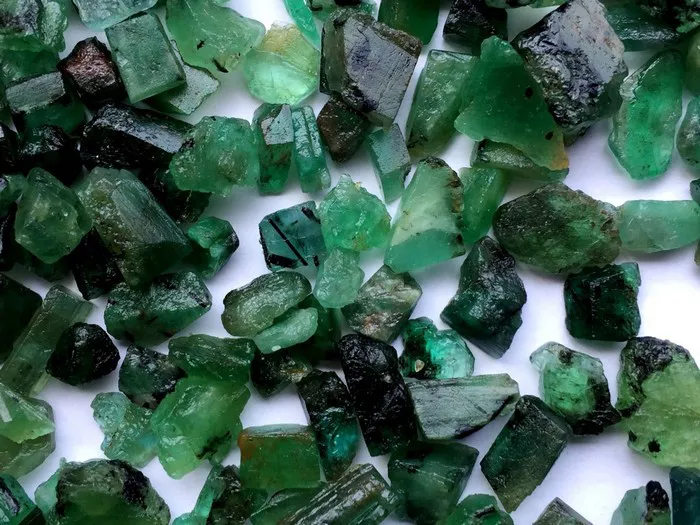Emeralds, with their captivating green hues and inherent allure, have been prized gemstones for centuries. Their raw form, untouched and uncut, holds immense potential for beauty and value. However, navigating the journey from rough stone to polished gem requires careful consideration and expertise. In this article, we delve into the assessment, processing, valuation, and ultimate decisions involved in handling raw emeralds.
Assessment of Raw Emeralds
The journey of a raw emerald begins with assessment. This initial step is crucial in determining the quality, characteristics, and potential of the stone. Gemologists and experts evaluate raw emeralds based on various factors, including color, clarity, and size.
Color is perhaps the most defining characteristic of an emerald. A vibrant, intense green hue with slight blue undertones is highly sought after. Clarity, referring to the presence of inclusions or imperfections, also plays a significant role. While some inclusions are acceptable and even add to the stone’s character, excessive flaws can detract from its value.
Size is another consideration, as larger emeralds are rarer and command higher prices. However, size alone does not determine value; the overall quality of the stone must also be taken into account.
What to Do with Raw Emeralds
Once assessed, raw emeralds can be transformed into exquisite gemstones through cutting and shaping. This process requires precision and skill to enhance the stone’s natural beauty while maximizing its value.
Cutting and Shaping
Cutting raw emeralds is both an art and a science. The goal is to balance preserving as much of the original weight as possible with achieving optimal color, clarity, and brilliance. Unlike diamonds, which are cut to maximize sparkle, emeralds are typically cut to showcase their rich color.
Emeralds are commonly cut into various shapes, including emerald-cut (rectangular with truncated corners), oval, round, and pear. Each shape offers unique opportunities to highlight the stone’s beauty and maximize its appeal.
Shaping, which involves faceting and polishing the rough stone, further refines its appearance. Skilled lapidaries use specialized tools and techniques to precisely shape and polish the emerald, revealing its inner radiance.
Valuation
Valuing raw emeralds involves considering a multitude of factors, including color, clarity, size, and cut. Gemological laboratories, such as the Gemological Institute of America (GIA), provide grading reports that detail these characteristics and offer insights into the stone’s quality and value.
In addition to the intrinsic qualities of the emerald, market demand and trends also influence its valuation. High-quality emeralds with desirable attributes command premium prices, especially in markets where demand exceeds supply.
Selling or Setting
Once assessed, cut, and valued, raw emeralds can be sold to collectors, jewelers, or consumers seeking exquisite gemstones. Alternatively, they can be set into jewelry pieces, such as rings, earrings, or pendants, to be enjoyed and admired for generations to come.
When selling raw emeralds, it’s essential to work with reputable dealers or auction houses that specialize in gemstones. Transparent pricing, authentication, and proper documentation are key considerations to ensure a fair and successful transaction.
Setting emeralds into jewelry requires careful craftsmanship to showcase the stone’s beauty while ensuring its durability and security. Whether set alone as a focal point or surrounded by diamonds or other gemstones, emeralds add a touch of elegance and sophistication to any piece.
Conclusion
In conclusion, raw emeralds hold immense potential for beauty, value, and investment. Through careful assessment, cutting, shaping, valuation, and decision-making, these rough stones can be transformed into exquisite gemstones that captivate and inspire. Whether sold to collectors or set into jewelry, the journey from rough emerald to polished gem is a testament to the enduring allure and timeless appeal of these precious stones.


